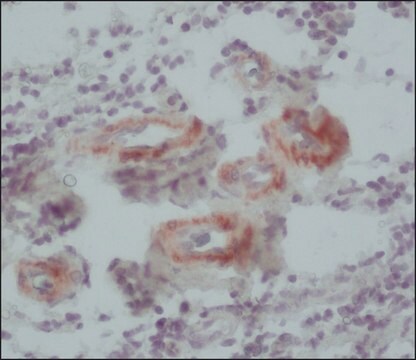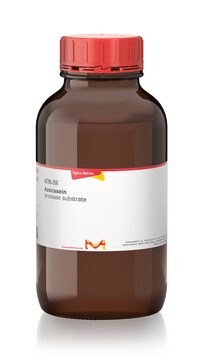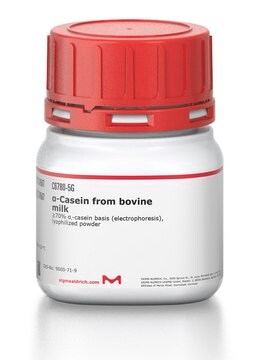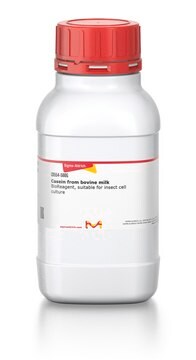C3777
Casein fluorescein isothiocyanate from bovine milk
Type II, essentially salt-free, lyophilized powder
Synonym(s):
FITC-casein
About This Item
Recommended Products
type
Type II
form
essentially salt-free, lyophilized powder
extent of labeling
20-50 μg FITC per mg solid
solubility
water: 5 mg/mL, clear to hazy, yellow to orange
storage temp.
2-8°C
Looking for similar products? Visit Product Comparison Guide
General description
Application
- as a substrate for semi-quantitative analysis of protease in Arabidopsis cells
- to determine the caseinolytic activity of secreted LasB (elastase), alkaline protease and protease IV
- for determining the SpeB (cysteine protease) proteolytic activity in Streptococcus pyogenes cells
Biochem/physiol Actions
Storage Class
11 - Combustible Solids
wgk_germany
WGK 3
flash_point_f
Not applicable
flash_point_c
Not applicable
ppe
Eyeshields, Gloves, type N95 (US)
Certificates of Analysis (COA)
Search for Certificates of Analysis (COA) by entering the products Lot/Batch Number. Lot and Batch Numbers can be found on a product’s label following the words ‘Lot’ or ‘Batch’.
Already Own This Product?
Find documentation for the products that you have recently purchased in the Document Library.
Customers Also Viewed
Protocols
Our General Protease Assay Procedures and Substrates overview.
Our team of scientists has experience in all areas of research including Life Science, Material Science, Chemical Synthesis, Chromatography, Analytical and many others.
Contact Technical Service











